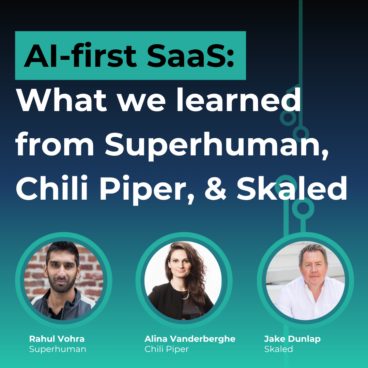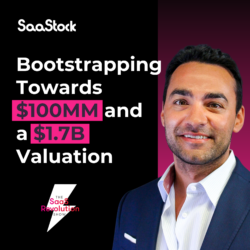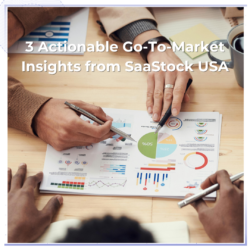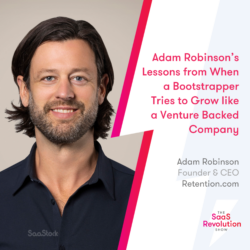We’ve hit a turning point in the AI hype cycle.
Since 2022, some B2B software companies have gone all-in on AI–embedding it into the core of their product and operations. And now, we’re seeing the impact: faster growth, leaner teams, competitive advantage.
For many though, AI is still an experiment, a wrapper, or an afterthought. And the overwhelming amount of headlines, information, and opinions make it hard to know where AI will add the most value for your business.
But if things stay that way, you’ll get left behind.
At SaaStock USA, we heard from those leading the way to see exactly how AI is driving growth–and how you can do it too.
Here’s what they shared:
Rahul Vohra, Founder and CEO at Superhuman, on building AI-first products
“We set out to rebuild the entire email experience from the ground up.”
Superhuman is a leading AI powered email app. Since 2023, they’ve launched AI features including: Write with AI, Auto Summarise, Instant Reply, and now, AI agents.
While they’ve seen great success from these features (a 20% increase in email efficiency), Rahul’s message is clear: “AI alone isn’t a strategy”.
These features aren’t bolt-ons or wrappers. They come from a deep understanding of customer needs and a long-held vision for the product. Rahul spent over a year speaking to 700+ customers to learn what tools they used before–and what they hated about them.
He kept doing this himself. Only handing over the process when he felt he truly understood the customers. As a result, the features that Superhuman is now known for were already part of the vision—LLMs just made building them possible.
Even now, Rahul doesn’t treat AI as the main event. Superhuman’s strategy to win is based on three pillars:
- AI leadership: Using cutting-edge tools to make email faster and more efficient.
- Cross-platform depth: Bringing Superhuman to every professional, everywhere, across Gmail, Outlook, mobile, and web.
- Multiplayer collaboration: Helping teams work on emails together, not just as individuals.
Today, Superhuman is entering its next phase of AI adoption: agentic tools that go beyond writing. These agents move AI from assistant to active collaborators that can draft replies, summarise threads, and follow up automatically.
The product keeps evolving, but the strategy hasn’t changed: start with the problem, stay close to the customer, and build only when it truly solves something.
Hear more from Rahul on The SaaS Revolution Show.
Alina Vandenberghe, Co-founder and Co-CEO at Chili Piper, on rethinking the org chart with AI agents
At Chili Piper, AI agents are fully embedded into the company’s go-to–market operations. In her keynote, Co-founder Alina Vandenberghe shared how these agents support sales and marketing with tasks like pipeline health, territory planning, lead qualification, CRM upkeep and more.
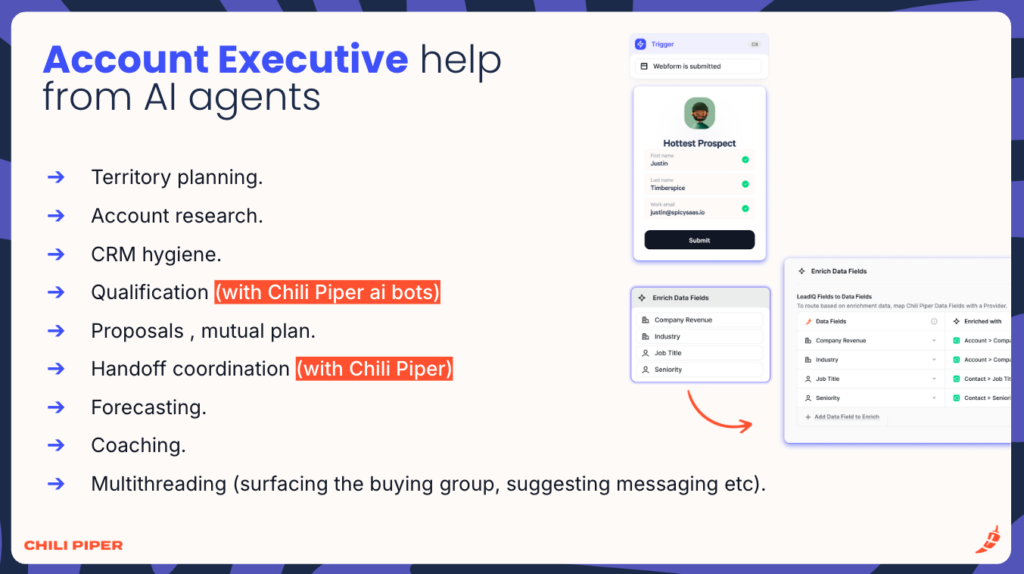
This shift frees sales reps up to focus their efforts where they add the most value, everything else is automated.
“All of the things a typical SDR does are done by agents. Then they own that last mile to make sure that when they get out with a message to an account, it’s highly personal.”
And the results speak for themselves:
- 17 outbound SDRs
- 500 meetings booked
- 160% of quota hit in Q1
For this approach to work, sales leaders need to rethink what it means to be a great rep. According to Alina, the most important skills today relate to creativity, relationship-building, and adaptability.

Once the right people are in place, managers need to nurture their teams in three areas:
- Prompt engineering and agent QA understanding.
- Storytelling, emotional intelligence, and trust building.
- Change-management (because uncertainty is here to stay).
This echoes the sentiment across the event: AI isn’t about replacing humans, but combining human and AI workforces to get the most impact.
Jake Dunlap, CEO at Skaled, on how AI is changing sales, marketing, and retention strategies
Building on the themes in Alina’s session, Jake Dunlap talked about rebuilding GTM roles with AI assistants.
For Jake, the magic happens when you embed AI so deeply into workflows that your reps no longer need to prompt it at all.
At Skaled, they build assistants to handle tasks including call prep, prospect researching, onboarding, and competitive intelligence. These insights then prompt the human, not the other way around.
This approach saves sales reps three to four hours each week – hours they can put into actively selling.
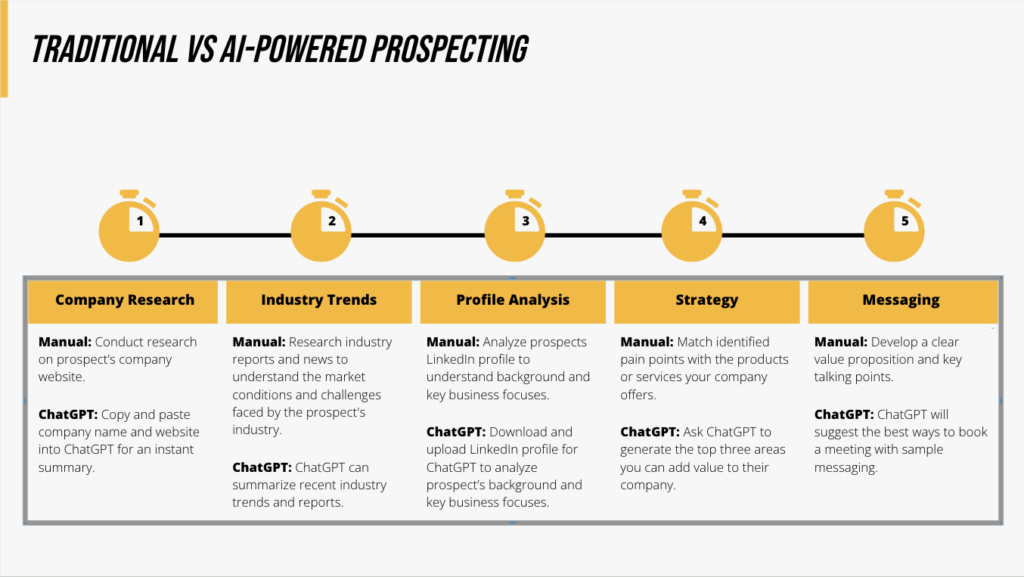
And Jake shared similar use cases across different GTM roles, for example:
- SDRs get assistants that triangulate industry trends with buyer pain points.
- AEs get call prep tools that pull insights from blogs, funding data, and customer signals.
- CS teams use assistants to summarise account history and surface churn risks.
- New hires are onboarded with AI trainers that simulate ICP conversations and build knowledge through adaptive quizzes.
His advice for leaders is to stop leaving your teams to figure this out alone. The best results come when you lead from the top, catch up, and create systems that reps can plug in to.
Hear more from Jake on the SaaS Revolution Show
SaaStock USA 2026: Where AI meets ARR
SaaStock USA is where where the next generation of AI and SaaS founders build, connect, and scale
Join us for curated content from top AI and B2B software voices, and the industry’s largest 1:1 meetings programme.
Come to hit your 2026 goals and stay for the conversations that will move your business forward at the definitive gathering for AI & B2B software founders, funders, and operators.
